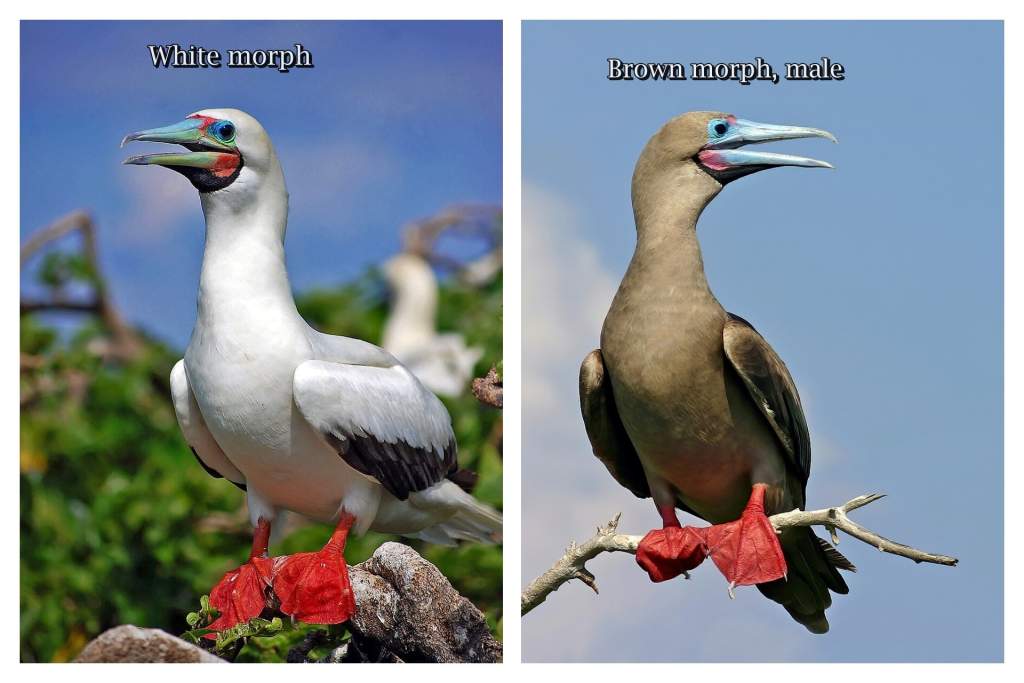The red-footed booby is a stunning seabird due to its colorful appearance and fascinating behavior.
Behavior: The red-footed booby (Sula sula) can be white, brown, or a mixture of both, and this has led to problems in identification. Its red or pink legs, however, are a reliable guide, and so is its sleek, long-tailed body. The Red-footed Booby is unusual in that it feeds both by day and by night on squid, crustaceans, and fish, including flying fish, which it often catches in flight. Like other boobies, it plummets down in slanting dives onto its prey but takes most from on or near the surface of the sea without plunging deeply in. Red-footed eagles nest in large colonies in trees, often in company with frigate birds that parasitize them.
They display in trees, males advertising themselves and greeting females with nodding heads and raised tails and wings, and they copulate there, the males calling. The red-footed booby nests on the islands of the Great Barrier Reef and the Coral Sea. Males gather most nesting material, while females weave it in. Both incubate the single egg in turns, like all boobies, by covering it with their webbed feet. Over the hot tropical midday, they also stand beside the egg, shading it.
Identification: Both adults are similar. Though there are several color forms, white birds have a yellow sheen on the head and neck; black primaries and secondaries; white tails; and white underparts. Eye-ring blue; eye brown. Bill is pale blue with a brown tip and a red or pink base rimmed with black. Feet red. Brown birds have all grey-brown plumage. Intermediates are brown on the head and neck and white behind.
The juveniles are dull grey-brown, darker above than below, and have dark breast bands. Face grey-blue. Eye green-grey. Bill black. Feet grey-pink. The immature birds are mottled white on brown with dark brown wings and tail feathers. The bill is brown and the feet are brick-red. The downy young bird is white with a black bill.

Diet: These seabirds are expert divers and locate a target, they plunge into the water with amazing speed and agility. They often travel long distances in search of food. Red-footed boobie’s diet mainly consists of fish and squid, including Gempylidae escolars and Exocoetidae flying fish, which may be caught while in the air.
Alternative names: It is also known as red-footed gannet and red-legged gannet.
Size: The red-footed Booby is about 710–790 mm in length.
Vocalizations: The red-footed booby call is a harsh, repetitive karr-uck at the nest, by both sexes.
Nesting: Nesting breeds occur in April–October. Nest of sticks and vines in tree or bush; in loose colonies.
Eggs & Incubations: The bird lays one egg, chalky white, oval, about 61 x 41 mm. The incubation period is about 40–45 days, for both sexes.
Distribution: The red-footed booby is found throughout tropical seas. In Australia, they breed on the northern islands of the Great Barrier Reef, in the Coral Sea, and on islands off northwestern Australia. This species is vagrant to the United Kingdom, New Zealand, and Sri Lanka.
Races: There are three races: one in the Indian Ocean and one in the western Pacific Ocean.
Family: Red-footed Booby belongs to the booby family, Sulidae.
Also Read: The Mystery Bird Yellow-Billed Oxpecker







